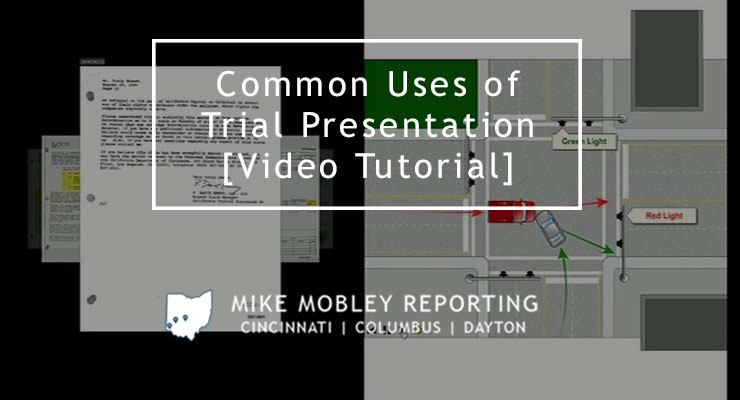Just How to Craft a Compelling Test Discussion That Wins Instances
In the world of trial campaigning for, the capacity to craft an engaging presentation is paramount to protecting desirable outcomes. An effective test discussion requires a nuanced understanding of the court's demographics and predispositions, alongside a thoroughly organized story that seamlessly incorporates valid evidence and psychological resonance. In addition, the tactical use aesthetic help can intensify comprehension, while efficient delivery makes certain engagement and link with jurors. Yet, the art of anticipation-- addressing prospective questions and arguments-- continues to be a vital aspect. Exactly how can these parts be integrated to develop a persuasive situation that resonates with the jury?
Understand Your Audience
Comprehending your target market is a vital component of crafting an efficient test discussion. The jurors, judges, and other participants in a trial originated from diverse histories, each possessing one-of-a-kind experiences and viewpoints. As such, it is crucial to tailor your discussion to reverberate with these people.

By framing your debates in a means that straightens with their values and experiences, you can enhance involvement and encourage them efficiently. Ultimately, a well-considered approach to target market understanding can dramatically affect the end result of your presentation and, subsequently, the trial itself.
Structure Your Narrative
A well-structured story acts as the foundation of a compelling test discussion. It provides a clear framework that guides jurors with the complexities of the instance while highlighting the essential debates. Trial Presentations. To achieve this, begin with an engaging opening declaration that outlines the main style and sets the tone for the discussion. This first engagement is essential for recording the court's attention and fostering their rate of interest.
Next, present the facts in a rational series, making sure that each item of proof builds upon the previous one. This chronological development helps jurors comprehend the context and relevance of each fact, consequently enhancing your disagreement. It is vital to weave in psychological components that reverberate with the court, as this can evoke compassion and support for your placement.

Conclude with an engaging closing statement that states your bottom lines and leaves an enduring impression. Sum up the crucial takeaways and make a strong appeal for the wanted judgment. By structuring your narrative properly, you can create a persuasive trial presentation that not just notifies yet also astounds and affects jurors in your favor.
Use Aesthetic Help
Incorporating visual aids into your trial presentation enhances the jurors' comprehension and retention of information. Efficient use of visual help can simplify complicated data, making it extra easily accessible and interesting for the jury. Charts, charts, timelines, and photos function as effective devices wikipedia reference to highlight bottom lines and strengthen your narrative.
When choosing visual aids, ensure they matter and straight support your situation. Each aesthetic ought to be clear, properly developed, and very easy to understand at a glimpse. Avoid messy slides or excessively intricate layouts; simplicity is vital. For example, an efficient timeline can successfully demonstrate the series of occasions, while a clear chart can succinctly present statistics that bolster your debate.

Practice Effective Delivery
Exercising reliable shipment see this is necessary for making a lasting impression during a trial presentation. The manner in which you communicate your disagreements can dramatically affect the jury's understanding and understanding of your case.
Furthermore, maintaining eye call with jurors promotes connection and involvement. Stay clear of checking out straight from notes; rather, familiarize yourself with the product to guarantee an extra all-natural delivery. Technique before coworkers or utilize recording tools to examine your performance and adjust as necessary.
Including storytelling techniques can additionally improve your discussion, making it more relatable and unforgettable. Use stops efficiently to stress essential factors and permit the jury to review the details presented.
Anticipate Questions and Arguments
Efficient delivery establishes the stage for an engaging trial presentation, however expecting questions and objections is equally essential in securing the court's self-confidence. By getting ready for potential inquiries and challenges, attorneys can develop a much more influential narrative and demonstrate their command over the instance.
Begin by identifying one of the most likely inquiries the court could have concerning vital proof, witness reputation, or lawful concepts. Creating clear, succinct feedbacks in development will not only bolster your debate yet additionally display your preparedness. Take into consideration usual arguments from the rival advice-- whether pertaining to the admissibility of evidence or the significance of specific factors-- and prepare counterarguments that efficiently address these concerns.
Furthermore, keep a versatile state of mind throughout the discussion. Focus on jurors' non-verbal cues; their body movement might show complication or apprehension. Being in harmony with these signals enables real-time adjustments to your delivery, providing quality when essential.
Eventually, preparing for inquiries and objections changes potential weak points right into staminas, strengthening your setting and instilling higher trust in the court. This aggressive strategy not just improves your reliability but likewise adds dramatically to the overall performance of your trial discussion.
Verdict
A compelling test presentation necessitates a detailed understanding of the audience, a well-structured narrative, and the critical use aesthetic help. Reliable distribution, defined by confident body language and purposeful juror involvement, boosts the overall influence. Additionally, expecting questions and objections makes sure preparedness and versatility in the court room. Collectively, these aspects contribute dramatically to shaping jury understandings and influencing instance results, underscoring the importance of precise try this out prep work in the art of test presentation.